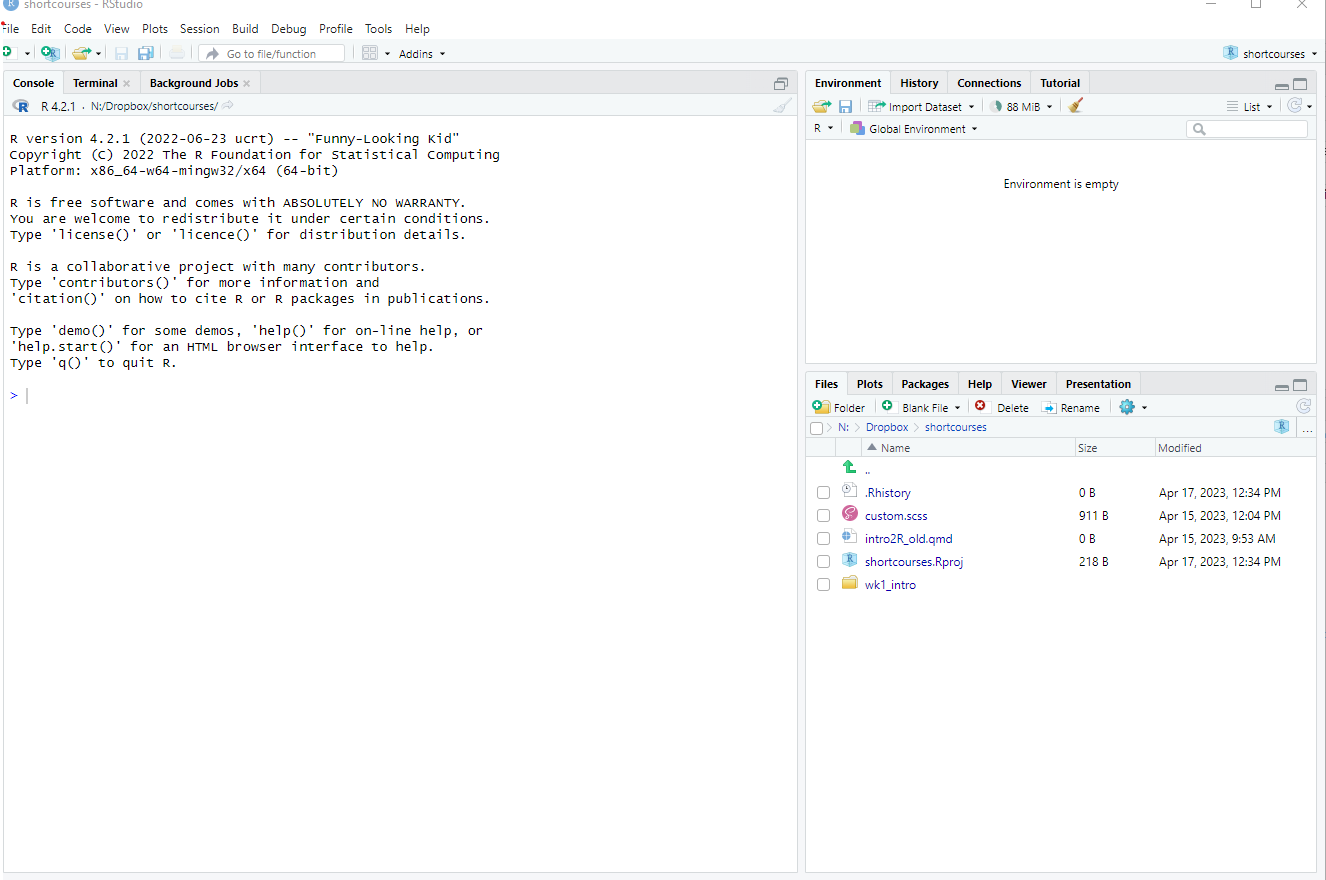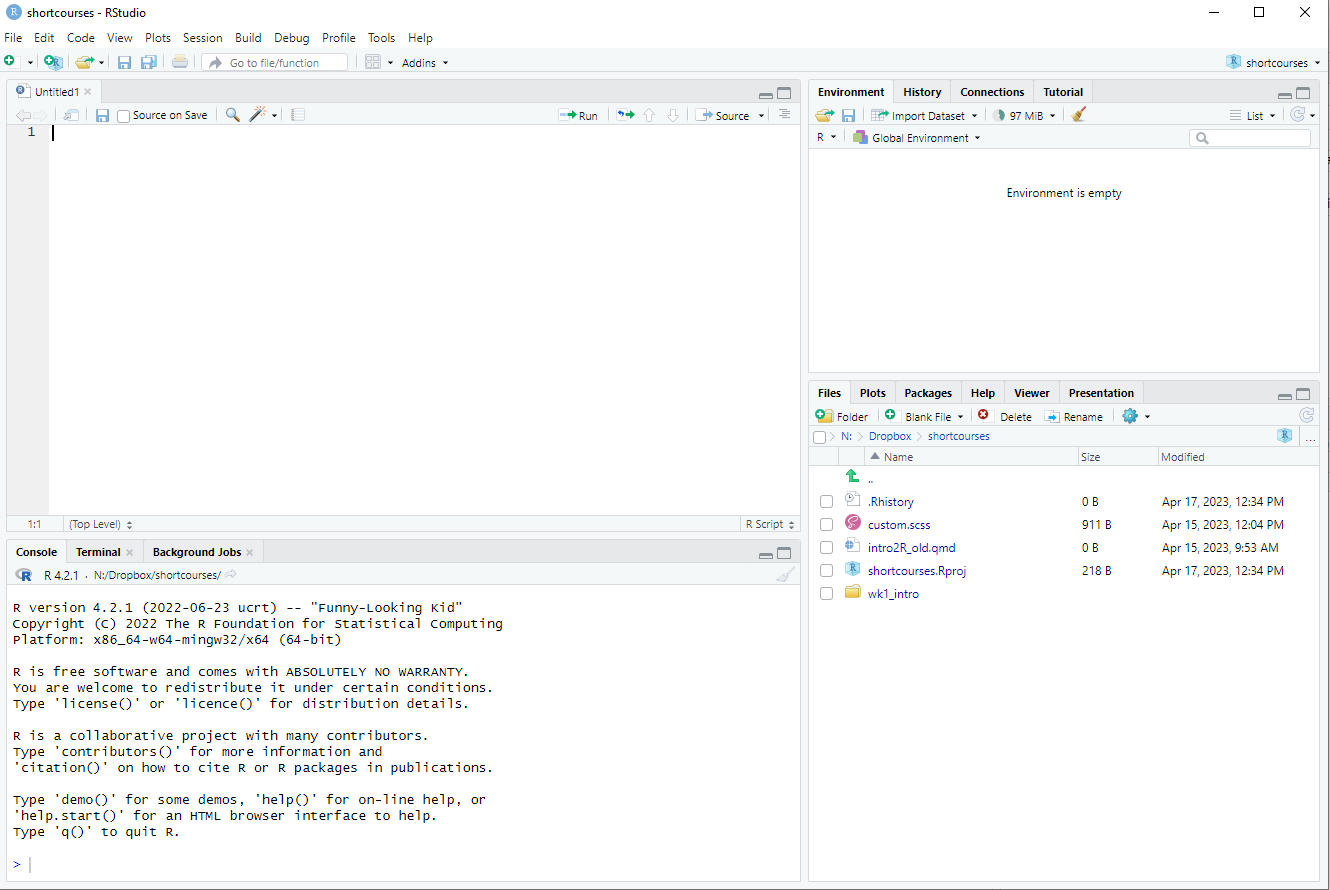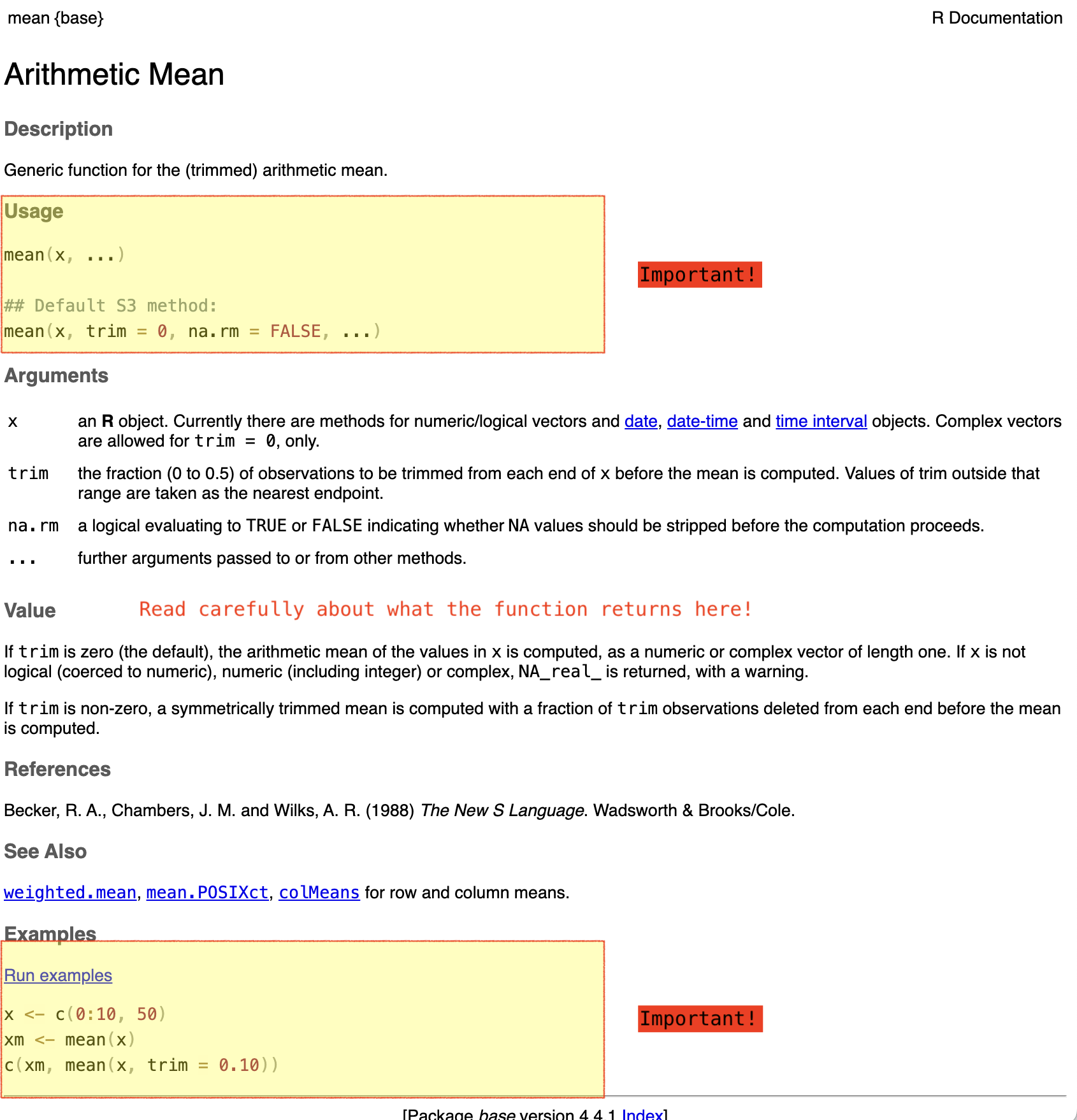# create directory called 'data'
dir.create("data")
# create subdirectory raw in the data directory
dir.create("data/raw")
# create subdirectory processed in the data directory
dir.create("data/processed")
# list the files and directories
list.files(recursive = TRUE, include.dirs = TRUE)
# [1] "data" "data/raw" "data/processed" "my_awesome_project.Rproj"Introduction to R
2024-08-17
Agenda
- Working with R & Rstudio
- R Basics
- Built-in Functions
- Working with Vectors
- Sneak Peak
What is R? What is Rstudio ?
1 2 3 4 5
What is R?
1 2 3 4 5
R is an open-source (free!) scripting language for working with data.
It started out as a statistical analysis language but is so much more now.
Getting R & Rstudio
1 2 3 4 5
You need the R language
And also the Integrated Development Environment
Navigating RStudio
1 2 3 4 5

project files are here.
Visualisations show up here
imported data shows up here
code can go here
Navigating RStudio
1 2 3 4 5

project files are here
imported data shows up here
code can also
go here
Organizing with projects
1 2 3 4 5
highly recommend nay require using projects to stay organized
keeps code files and data files together, allowing for easier file path navigation and better reproducible work habits
Organizing with projects
1 2 3 4 5

project files are here
imported data shows up here
code can also
go here
Organizing with projects
1 2 3 4 5
.
└── my_awesome_project
├── my_awesome_project.Rproj
├── data
├── raw
└── temp
└── processed
├── src
├── 01_first_script.R
└── 02_second_script.R
├── R
├── useful_function_1.R
└── useful_function_2.R
├── writing
├── 01_chapter.Rmd
├── output
└──README.md
Organizing with projects
1 2 3 4 5
Exercise 1
R Basics
1 2 3 4 5
Tentative steps
1 2 3 4 5

project files are here.
Visualisations show up here
imported data shows up here
code can go here
Tentative steps
1 2 3 4 5
Assign to an object
1 2 3 4 5
<- is the assignment operator1
Manipulate objects
1 2 3 4 5
[1] 48[1] 41.04836[1] 89.04836Error in my_obj3 + my_obj4: non-numeric argument to binary operatorGoogle is your friend to decipher this error!
Objects may be modified
1 2 3 4 5
[1] "test"[1] 89.04836Error in eval(expr, envir, enclos): object 'no_obj' not foundError in eval(expr, envir, enclos): object 'my_obj5' not foundPay attention to the errors!
Built-in Functions
1 2 3 4 5
Functions
1 2 3 4 5
[1] 2 3 1 6 4 3 3 7[1] 8[1] 3.625[1] 1.995531[1] 4cis built-in R function. short for concatenate- Likewise
length,mean,sd,[are other built-in functions in R.
Anatomy of Functions
1 2 3 4 5
- Functions can be broken down into three components: arguments (formals), body, and environment.
Anatomy of Functions
1 2 3 4 5
- Functions are objects, just as vectors are objects. Be very careful!
Getting Help
1 2 3 4 5

Ask for help!
1 2 3 4 5


Help Me Help You!
1 2 3 4 5 6

I am importing fairly large csv’s (2 - 3 million rows). When I import these using read_csv, it fails. Anyone know why?
This question is missing the key information required to reproduce and troubleshoot the problem:
How is the datafile being imported delimited(csv(comma-delimited), other)?What operating system is involved(Linux, Windows)? What locale?What version of R running? What functions and libraries are being used?The post does not provide an example of the R code, with the data that led to the problem
Working with Vectors
1 2 3 4 5
Extract Elements from Vectors
1 2 3 4 5
[is very useful extractor function.- Do not confuse with
(. - Extract based on position
Extract Elements from Vectors
1 2 3 4 5
[1] 2 3 1 6 4 3 3 7[1] FALSE FALSE FALSE TRUE FALSE FALSE FALSE TRUE[1] 6 7[1] 6 7[1] 6 4 7[1] 4[1] 2 3 1 6 3 3 7Replace Element(s)
1 2 3 4 5
Ordering Vectors
1 2 3 4 5
Vectorisation
1 2 3 4 5
[1] 5000 5000 5000 2500 5000 500 500 35[1] 1017 1015 1013 519 1011 100 117 22Beware though of recycling
Beware of Missing Data
1 2 3 4 5
Everything Printed is not True
1 2 3 4 5
Exercise 2
Sneak Peak
1 2 3 4 5
Rectangular Data
1 2 3 4 5
